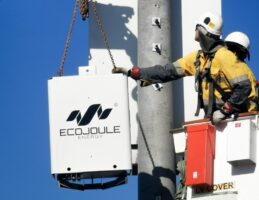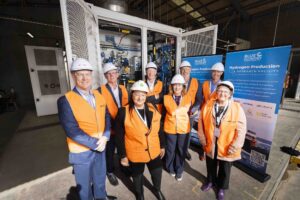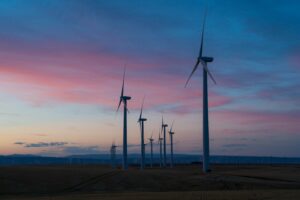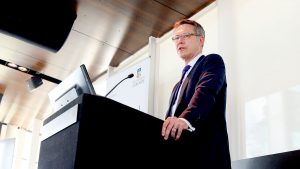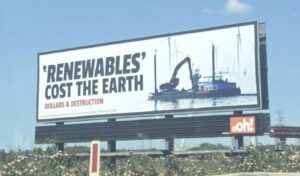The Coalition government has effectively confirmed what is already suspected – that it expects no further investment in large scale renewables, and no more significant emissions cuts – from 2022 all the way through to 2030, should it stay in power.
The admission came in a press release from the energy minister and accompanying data from the government’s Emissions Projections 2018 Report, which is due out later this week.
Energy minister Angus Taylor said it showed that emissions from electricity generation in the National Electricity Market (NEM) – which covers most states apart from W.A. and the Northern Territory – will fall to 26 per cent below 2005 levels by 2022.
“This means emissions in the NEM will drop to levels consistent with Australia’s Paris target eight years ahead of time,” Taylor said in a statement.
Taylor noted that much of the decline will be driven by an increase in renewable energy, a direct result of the Renewable Energy Target, the mechanism that that the Abbott government tried to kill back in 2015, along with the carbon price, and only succeeded in reducing.
But a 26 per cent reduction in emissions from the electricity sector, apparently, is enough – notwithstanding the recent IPCC report, the latest Bureau of Meteorology warnings, and the lack of any policy detail about how the rest of the economy can reach its share of the 26-28 per cent reductions that Australia signed up for in Paris.
An excerpt from the report included by Taylor’s office shows that it expects emissions from the electricity sector remaining “relatively stable” from 2021 through to 2030.
That’s because – apart from the continued uptake of rooftop solar by households and small business – the government expects no other large scale generation to be built. The total share of renewables in electricity generation will rise from 35 per cent in 2021 to 39 per cent in 2022, driven by rooftop solar.
This is more or less in line with the modelling done by the Energy Security Board while it was pushing for the adoption of the National Energy Guarantee, since dropped becuase the emissions component – even seeking no new cuts – was deemed to be too ambitious for the Coalition’s Hard Right.
The Business Council of Australia, which includes most of the country’s major utilities, also argues that pushing the 2030 target from 39 per cent to 50 per cent, as proposed by Labor, will be “reckless” and “economy wrecking.”
Of course, the modelling – both from the ESB and it would seem the government’s Emissions Projection report – is complete nonsense, because it does not factor in Victoria and Queensland’s 50 per cent renewable energy targets, nor the rapid transition expected in NSW, where more coal plants are due to retire.
Nor does it factor in the growing demand for corporate power purchase agreements, as an increasing number of big energy users turn to wind and solar to reduce their costs. Some of them are seeking to source all their electricity from wind and solar, firmed by storage and/or financial contracts.
Never mind all that, the Coalition now expects emissions in the NEM to increase slightly as electricity demand increases with population and economic growth.
It says rooftop solar PV uptake is projected to grow strongly to 2030, helping to meet this additional electricity demand.
“A very small proportion of this additional demand is also met by thermal (coal and gas) electricity generation,” the government statement says. “By 2030, emissions in the NEM are 26 per cent below 2005 levels.
“The Government has a sensible and balanced plan to deliver affordable, reliable 24/7 power for Australian families and small businesses, while meeting our emissions reductions targets in the NEM.”
State and federal energy ministers will meet under the auspices of COAG in Adelaide on Wednesday to discuss the latest proposals for the NEG, likely to focus only on the “reliability” obligation, plus an outline of the ESB’s plans for the future, and an update on the implementation of AEMO’s Integrated System Plan.




